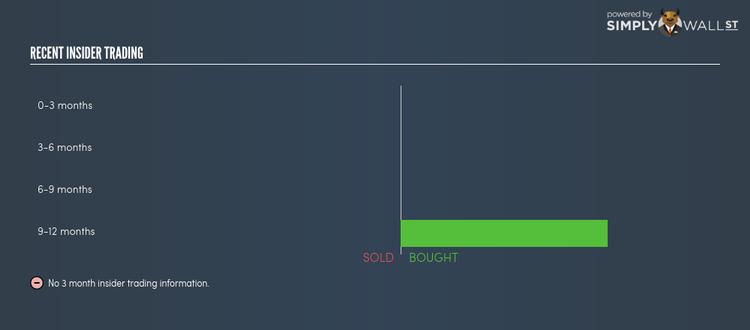Why IPC Corporation Ltd’s (SGX:AZA) Ownership Structure Is Important

In this article, I’m going to take a look at IPC Corporation Ltd’s (SGX:AZA) latest ownership structure, a non-fundamental factor which is important, but remains a less discussed subject among investors. When it comes to ownership structure of a company, the impact has been observed in both the long-and short-term performance of shares. Since the effect of an active institutional investor with a similar ownership as a passive pension-fund can be vastly different on a company’s corporate governance and accountability of shareholders, investors should take a closer look at AZA’s shareholder registry.
View our latest analysis for IPC
Institutional Ownership
Institutional investors transact in large blocks which can influence the momentum of stock prices, at least in the short-term, especially when there is a low level of public shares available on the market to trade. A low institutional ownership of 2.57% puts AZA on a list of companies that are not likely exposed to spikes in volatility resulting from institutional trading.
Insider Ownership
I find insiders are another important group of stakeholders, who are directly involved in making key decisions related to the use of capital. In essence, insider ownership is more about the alignment of shareholders’ interests with the management. A major group of owners of AZA is individual insiders, sitting with a hefty 46.06% stake in the company. Broadly, insider ownership of this level has been found to negatively affect companies with consistently low PE ratio (underperforming). And a positive impact has been seen on companies with a high PE ratio (outperforming). It’s also interesting to learn what AZA insiders have been doing with their shareholdings lately. While insider buying is possibly a sign of a positive outlook for the company, selling doesn’t necessarily indicate a negative outlook as they may be selling to meet personal financial needs.
General Public Ownership
A big stake of 37.98% in AZA is held by the general public. With this size of ownership, retail investors can collectively play a role in major company policies that affect shareholders returns, including executive remuneration and the appointment of directors. They can also exercise the power to decline an acquisition or merger that may not improve profitability.
Private Company Ownership
Potential investors in AZA should also look at another important group of investors: private companies, with a stake of 13.40%, who are primarily invested because of strategic and capital gain interests. An ownership of this size indicates a strong financial backing and has the potential to influence AZA’s business strategy. Thus, investors should dig deeper into AZA’s business relations with these companies and how it can affect shareholder returns in the long-term.
Next Steps:
Institutional ownership level and composition in AZA is not high nor active enough to significantly impact its investment thesis. However, ownership structure should not be the only determining factor when you’re building an investment thesis for AZA. Rather, you should be examining fundamental factors such as IPC’s past track record and financial health. I urge you to complete your research by taking a look at the following:
Financial Health: Is AZA’s operations financially sustainable? Balance sheets can be hard to analyze, which is why we’ve done it for you. Check out our financial health checks here.
Past Track Record: Has AZA been consistently performing well irrespective of the ups and downs in the market? Go into more detail in the past performance analysis and take a look at the free visual representations of AZA’s historicals for more clarity.
Other High-Performing Stocks: Are there other stocks that provide better prospects with proven track records? Explore our free list of these great stocks here.
NB: Figures in this article are calculated using data from the last twelve months, which refer to the 12-month period ending on the last date of the month the financial statement is dated. This may not be consistent with full year annual report figures.
To help readers see pass the short term volatility of the financial market, we aim to bring you a long-term focused research analysis purely driven by fundamental data. Note that our analysis does not factor in the latest price sensitive company announcements.
The author is an independent contributor and at the time of publication had no position in the stocks mentioned.

 Yahoo Finance
Yahoo Finance 

